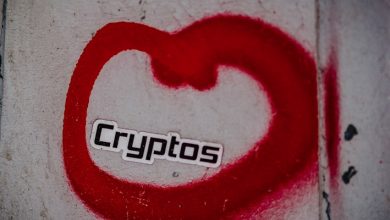The Future of NFTs: Emerging Projects Beyond Art

- Exploring the use of NFTs in the gaming industry
- NFTs revolutionizing the music and entertainment sectors
- The environmental impact of NFTs and sustainable solutions
- NFTs in real estate: tokenizing property ownership
- The rise of NFTs in the fashion and luxury market
- Challenges and opportunities for NFTs in the healthcare sector
Exploring the use of NFTs in the gaming industry
The gaming industry is increasingly exploring the use of NFTs to enhance player experiences and create new revenue streams. Non-fungible tokens offer unique digital assets that can be used in games to provide players with exclusive items, characters, or abilities. By incorporating NFTs into games, developers can offer players a sense of ownership and scarcity, making in-game items more valuable.
One of the key benefits of using NFTs in gaming is the ability to create true ownership of digital assets. Unlike traditional in-game items that are owned and controlled by the game developer, NFTs are stored on a blockchain, giving players full control over their assets. This opens up new possibilities for players to buy, sell, and trade in-game items both within and outside of the game.
Another advantage of NFTs in gaming is the potential to create a more immersive and engaging gaming experience. Players can collect rare NFTs, complete challenges to earn exclusive tokens, and even participate in decentralized autonomous organizations (DAOs) that govern in-game economies. This level of interaction and customization can lead to increased player retention and loyalty.
NFTs revolutionizing the music and entertainment sectors
NFTs are not only transforming the art world, but they are also revolutionizing the music and entertainment sectors. Musicians, artists, and even actors are starting to explore the potential of NFTs to create unique and valuable digital assets.
One of the most exciting aspects of NFTs in the music industry is the ability for artists to sell limited edition songs, albums, or even concert tickets as NFTs. This allows fans to own a piece of their favorite artist’s work in a way that was never possible before.
Furthermore, NFTs are opening up new revenue streams for musicians and entertainers. By selling exclusive content as NFTs, artists can connect directly with their fans and bypass traditional intermediaries like record labels or streaming platforms.
Additionally, NFTs are enabling new ways for artists to engage with their audience. For example, musicians can create interactive NFTs that give fans access to virtual meet-and-greets, backstage passes, or even the chance to collaborate on a song.
Overall, NFTs are reshaping the music and entertainment industries by providing artists with new opportunities to monetize their work, connect with their fans, and experiment with innovative ways of creating and distributing content.
The environmental impact of NFTs and sustainable solutions
One of the major concerns surrounding NFTs is their environmental impact. The process of minting and trading non-fungible tokens consumes a significant amount of energy, primarily due to the blockchain technology they are built on. This has led to criticism from environmentalists and calls for more sustainable solutions to be implemented in the NFT space.
To address these concerns, several projects have emerged that aim to make NFTs more environmentally friendly. One such solution is the development of carbon-neutral NFT platforms that offset the carbon emissions produced during the minting process. By investing in carbon credits and renewable energy projects, these platforms can help mitigate the environmental impact of NFTs.
Another approach to reducing the carbon footprint of NFTs is through the use of proof-of-stake (PoS) blockchains instead of the traditional proof-of-work (PoW) systems. PoS blockchains require significantly less energy to operate, making them a more sustainable option for minting and trading NFTs. This shift towards PoS blockchains is gaining traction in the NFT community as a way to address environmental concerns.
Furthermore, some projects are exploring innovative ways to incorporate sustainability into the design of NFTs themselves. For example, artists and creators can embed metadata within their NFTs that showcase the environmental impact of the token, such as the amount of energy used during minting. This transparency can help raise awareness about the environmental footprint of NFTs and encourage more sustainable practices in the industry.
Overall, the environmental impact of NFTs is a pressing issue that requires collaborative efforts from both creators and platforms to address. By implementing sustainable solutions such as carbon-neutral platforms, PoS blockchains, and transparency measures, the NFT space can work towards minimizing its carbon footprint and promoting a more eco-friendly approach to token creation and trading.
NFTs in real estate: tokenizing property ownership
NFTs are revolutionizing the real estate industry by allowing property ownership to be tokenized. This means that physical properties can be represented as unique digital tokens on the blockchain, making it easier to buy, sell, and trade real estate assets online.
By tokenizing property ownership through NFTs, investors can now own fractions of high-value properties without having to purchase the entire asset. This opens up new opportunities for smaller investors to participate in the real estate market and diversify their portfolios.
Additionally, NFTs provide a transparent and secure way to verify ownership of real estate assets, reducing the risk of fraud and disputes. Smart contracts embedded in NFTs can automate processes such as rental payments, property management, and even voting rights for property decisions.
Overall, the tokenization of property ownership through NFTs is set to transform the real estate industry, making it more accessible, efficient, and secure for investors and property owners alike.
The rise of NFTs in the fashion and luxury market
One of the most intriguing developments in the world of NFTs is their rise in the fashion and luxury market. As more and more brands and designers explore the potential of non-fungible tokens, a new wave of digital ownership is sweeping through the industry.
From virtual fashion shows to limited edition digital accessories, NFTs are revolutionizing the way consumers interact with fashion and luxury goods. By creating unique digital assets that can be bought, sold, and traded on the blockchain, designers are able to offer their customers a whole new level of exclusivity and personalization.
For fashion enthusiasts, owning an NFT represents a way to connect with their favorite brands on a deeper level, while for designers, it opens up a whole new world of possibilities for creativity and innovation. As NFTs continue to gain traction in the fashion and luxury market, we can expect to see even more exciting collaborations and projects emerge in the near future.
Challenges and opportunities for NFTs in the healthcare sector
When it comes to the healthcare sector, NFTs present both challenges and opportunities that could revolutionize the industry. One of the main challenges is ensuring data privacy and security when using NFTs to store sensitive medical information. Healthcare organizations will need to implement robust security measures to protect patient data from potential breaches.
On the other hand, there are numerous opportunities for NFTs in healthcare. One potential use case is in the authentication of medical records and credentials. By tokenizing these documents, healthcare professionals can easily verify the authenticity of a patient’s history or a provider’s qualifications.
Another opportunity lies in the digitization of healthcare assets such as medical equipment and devices. By tokenizing these assets, healthcare organizations can track their usage, maintenance, and ownership more efficiently, leading to cost savings and improved patient care.
Furthermore, NFTs can be used to incentivize healthy behaviors and adherence to treatment plans. For example, patients could earn tokens for meeting health goals or following their prescribed regimen, which could then be redeemed for rewards or discounts on healthcare services.
In conclusion, while there are challenges to overcome, the potential benefits of NFTs in the healthcare sector are vast. By leveraging this technology, healthcare organizations can improve data management, streamline processes, and enhance patient outcomes in ways that were previously not possible.



